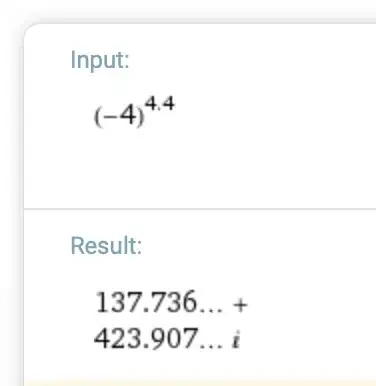One would think that, since $4.4$ as a mixed fraction is ($22/5$), raising a number regardless of it being negative or positive would yield a real number. However, when plugging this equation into WolframAlpha, I keep getting an imaginary number.
Can someone help me understand? I plug the equation in like so: (-4)^4.4 and still get a nonreal answer. What is going on here?
